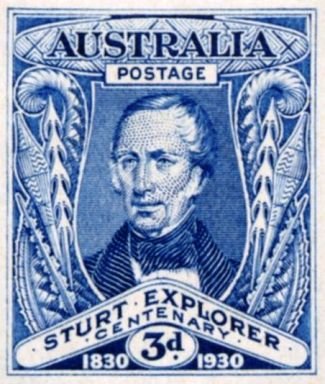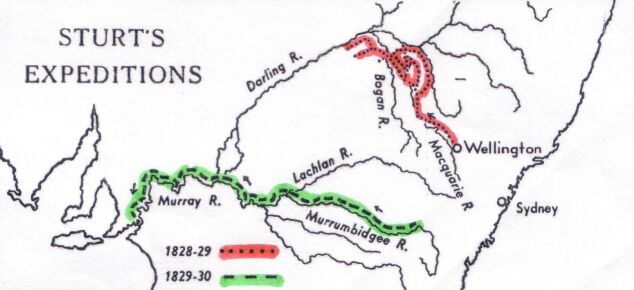On this day: Sturt begins river exploration

ON 10 NOVEMBER 1828, the English explorer Charles Sturt set out from Sydney on his expedition of the westward-flowing rivers in south-east Australia, thus beginning a historic venture to determine if an inland sea lay in the unexplored country beyond the Blue Mountains.
Colonists had discovered rivers at their sources west and north of Sydney, but these flowed westward, away from the known coastline. As Australia had been recently confirmed as a whole continent instead of two potentially large islands, many hoped for agricultural reasons that the rivers led to a large inland body of water they could exploit.
Sturt – commemorated today with numerous places and institutions that carry his name – was born in India in 1795 and joined the British army when he was 18. He was “someone who was often in the wrong place at the wrong time,” says Denise Schumann, historian and cultural heritage adviser for Norwood Council in South Australia.
“He arrived in Europe three days after the Battle of Waterloo, and had terrible luck in his [military] expeditions,” she says. “But he was fortunate to learn surveying and drawing while in France following the war. When a role escorting convicts with his regiment brought him to Australia in 1827, he managed to use this knowledge to explore previously unvisited land”.
Solving a mystery
Sturt began his expedition along the Macquarie River to the north-west of Sydney, and on 2 February 1829, discovered that the this river flowed into the previously unknown Darling River in what is now north-west NSW. He named the new river for Sir Ralph Darling, then governor of NSW.
Soon after, the expedition’s supplies began to run low due to severe drought and Sturt fell ill, forcing them back to Sydney on 21 April. The team had proved that northern NSW had no inland sea, but they had deepened the mystery about where the rivers flowed.
After Sturt recovered, they set off again on 3 November 1829, this time along the Murrumbidgee River, south of the Macquarie. On the 14 January 1830, 900km into their journey, they discovered the Murray River into which the Murrumbidgee flows. Sturt named the Murray for Sir George Murray, secretary of state for the colonies.
Sturt followed the Murray River until it reached a large body of water thinking he’d discovered something new. But it was Lake Alexandrina, where the Murray River meets the sea on the SA coast, and it had already been discovered two years earlier.
Sturt later wrote about the discovery: “Immediately below me was a beautiful lake which appeared to be a fitting reservoir for the noble stream which had led us to it. Even while grazing at this fine scene I could not but regret that the Murray had thus terminated, for I immediately foresaw that in all probability we should be disappointed in finding any practicable communication between the lake and the ocean.”

Sturt’s mission to map the westward flowing rivers was completed over two expeditions, detailed here. (Credit: Project Gutenberg)
A sea too late
Nevertheless, by reaching the end of the Murray River, Sturt had shown that all the known westward-running rivers eventually flowed into the sea at the coastline of SA, says Denise. But this didn’t disprove the idea of an inland sea further west. Sturt spent some time back in England and didn’t go exploring again for another 14 years, but the idea of an inland sea was something he never gave up thinking about.
In 1844 he set out again determined to find it – or at least the dry centre of the continent, which was now looking more likely – his expedition trekked up the north-west of NSW and carried on into the dry heart, making it as far as the Simpson Desert, and the centre of the continent, in November 1845.
“He didn’t find an inland sea and was disappointed to disprove its existence, but he was nevertheless the first to find the centre of Australia,” says Denise. “It’s ironic because the desert is an extinct sea, so technically he found what he was looking for, but in the wrong era!”
Sturt wanted to continue north, but was afflicted with a serious case of scurvy, so he headed back south, concluding his efforts to help re-write the map of the eastern half of Australia.
According to the Australian Dictionary of Biography, “although Sturt probably entered his career as an explorer through influence, his selection was justified by results. He was a careful and accurate observer and an intelligent interpreter of what he saw, and it was unfortunate that much of his work revealed nothing but desolation… He remained throughout his life an English Tory gentleman with an unshakeable faith in God [and] will always be remembered…as the first to chart the Murray River.”
RELATED STORIES

